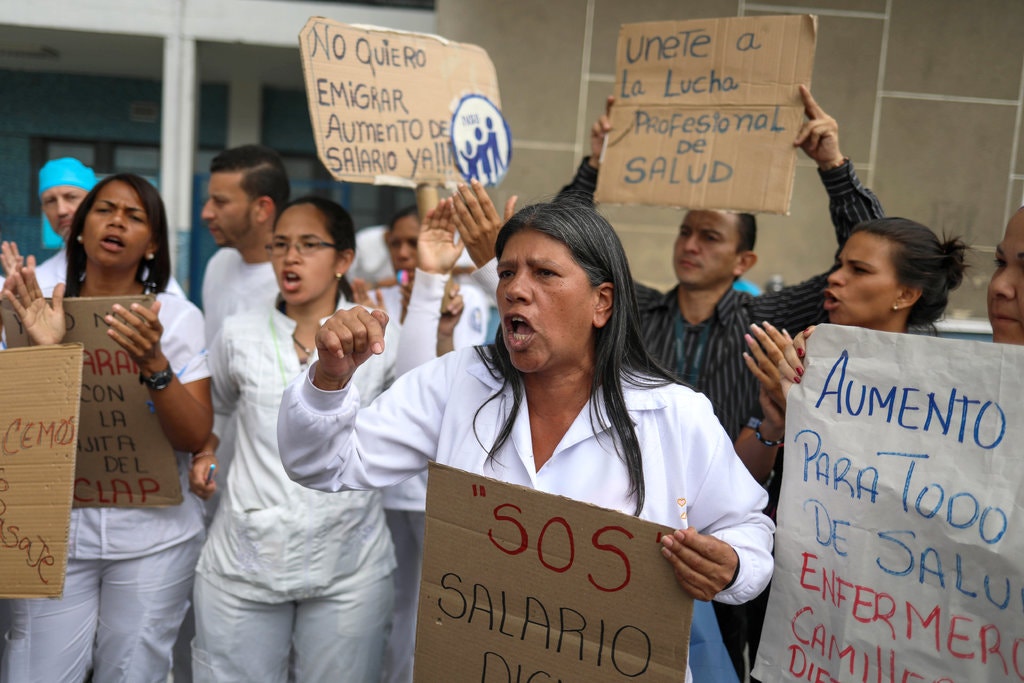The Human Rights Commission of the state of Zulia (Codhez) conducted the second survey on food consumption in the state of Zulia from May 10 to 17 to learn about the food habits of people in Zulia, their daily food consumption and their strategies to access food amid the quarantine due to the COVID-19 outbreak.
After comparing the results of this survey on survival strategies with food consumption habits, Codhez notices that families in Cabimas, Lagunillas, Maracaibo and San Francisco, face serious difficulties in diversifying their diet despite intense efforts such as changing the quality of the food they eat, rationing meals, reducing the number of people who eat at home or making some adaptations to be able to put food on their tables.
Codhez observes that 89% of families in Cabimas exceed the threshold of extreme negative adaptation while 11% are food insecure.
In Lagunillas, 76% of homes exceed the threshold of extreme negative adaptation, 6% are food insecure, and 18% are at risk of suffering food insecurity. In general terms, no household in these municipalities lives in a normal situation.
For its part, 60% of households in Maracaibo exceed the threshold of extreme negative adaptations while 11% are food insecure and 20% are at risk of experiencing food insecurity. In general terms, this means that 91% of families experience serious difficulties in accessing food, having to adopt survival strategies to maintain basic consumption.
Only 9% of homes are found to be in a normal situation. In San Francisco, 70.6% of families exceed the threshold of extreme negative adaptations, 15.7% are food insecure, and 9.8% are at risk of suffering food insecurity. In other words, 96.1% of households must adopt survival strategies to maintain a basic consumption of food.
According to the online survey, indicates that families are making important efforts to feed themselves but food diversity and food consumption indexes have not improved. In the first survey carried out by Codhez on April 19/26, 79% of households in Maracaibo had to adopt survival food strategies.
89% of households in Cabimas taking extreme measures to survive
Families in Cabimas have adopted consumption strategies to survive. 89% of households exceed the threshold of extreme negative adaptations while 11% are food insecure.
Eating only once a day or not eating at all is a situation that occurs at least once a week in 63% of households. 42% of families skip a meal two to three times a week, and 11% skip a meal every day.
Other strategies reported in large extent were borrowing food (84%), relying on the help of neighbors, friends, and relatives for food (74%), and spending the family savings on food (79%).
Meanwhile, food buying habits are distributed as follows: 26% of Cabimas households buy food daily while 74% do it 1 to 4 days a week.
Regarding the daily diet of families in Cabimas, the consumption of cereals prevails (arepas, pasta, bread, rice, corn or wheat flours, among others) in 89% of the surveyed households, along with beans (74%), and oils and fats (68%).
In total, 47% of households exhibited a high food diversity, consuming 6 to 11 different food categories; 21% showed average diversity, consuming food from 4 or 5 categories; and 32% a low diversity, consuming less than 3 food categories.
65% of households in Lagunillas report spending their saving on food
76% of homes in Lagunillas exceed the threshold of extreme negative adaptations, while 6% are food insecure and 18% are at risk of suffering it. In general terms, all the respondent households in Lagunillas reported serious difficulties in accessing food.
Eating only once a day or not eating at all occurs at least once a week in 53% of households: 41% skip a meal one to three times a week, and 12% skip a meal five to seven times.
65% of families are forced to spend their savings on daily food purchases: this is the highest ratio when compared to Cabimas (53%), Maracaibo (51%), and San Francisco (41%).
Besides, 41% of households reported buying food once a week and 29% reported making daily purchases. Faced with fuel shortages, 59% of families must travel to the food shop on foot.
According to the survey, families in Lagunillas report a marked consumption of cereal (94%). The consumption rate of beans stands out in second place (82%), being higher in comparison to the other surveyed cities.
Diversity in food consumption decreased from 81% to 55% in Maracaibo
The consumption of arepa, pasta, bread, rice, corn, or wheat flour continues to abound in Maracaibo (95%). The consumption of cooking bananas and tubers (67%) is also noteworthy.
In total, 55% of households enjoy a high food diversity, consuming food from 6 to 11 different categories; 27%, exhibit an average diversity, consuming 4 or 5 different food categories; and 18% a showed low food diversity, consuming less 3 different categories.
In the April poll, the results showed a different outlook: 81% of households exhibited a high diversity; 14%, a medium diversity; and 5% a low diversity. Although the trend towards high diversity is decreasing, this category predominates because it is the experience of middle-stratum households that, nevertheless, must undergo adaptations to access food when they do not have the financial means to afford it.
Eating only once a day or not eating at all occurs at least once a week in 35% of households. Most families reported spending their savings on food (84%) and selling or trading their belongings for food (50%).
Regarding groceries, 71.4% of families buy food one to three times a week. The fuel shortage has forced 76% of the families to travel on foot to their local food sales shop, in contrast to 18% of them who report using their cars.
16% of households in San Francisco skip one meal a day
The daily food consumption in San Francisco is based on cereals (94%). 57% of households reported consuming cooking bananas and tubers, meat proteins (including viscera), eggs, and beans.
Regarding weekly consumption, the score is “acceptable” in 49% of households, “limited” in 27%, and “poor” in 24%. In sum, 43% of households showed a high food diversity, consuming food from 6 to 11 different categories; 41% showed average diversity, consuming 4 or 5 different food categories; and 16% exhibited low food diversity, with less than 3 food categories being consumed.
Concerning the strategies adopted by San Francisco families to access food, it is noteworthy that 73% of households stated that they skip breakfast, lunch, or dinner at least once a week while 16% did so every day.
Other survival strategies registered include spending savings on food (86%), selling or exchanging personal property for or buying food (61%), and working for food (57%).
Regarding the weekly purchase of food, 74.5% of homes reported doing it once a week, but the fuel shortage has forced 84% of the families to travel on foot to their local food shop: 23% of them walk half a mile or less, 35% walk between one half and 3 miles, and 7% must walk more than 3 miles or more to buy food.
Measures to guarantee the right to adequate food urgently needed
The results of the survey on food consumption and food security show the fragility – amid a deteriorating context – of the domestic economy of Zulia households faced by increasing food expenses and the responsibility to cover other needs such as drinking water or health care.
In this sense, Codhez urges the design and implementation of a compensation program to protect the right to be free from hunger.
More than ten weeks into the state of alarm, Codhez reiterates that the Venezuelan State must urgently design and implement a plan that provides an immediate and efficient response to food insecurity, with particular attention to the most vulnerable populations.
You can download the report on the Survey on Food Consumption and Food Security in Spanish HERE.
Translated by: José Rafael Medina




